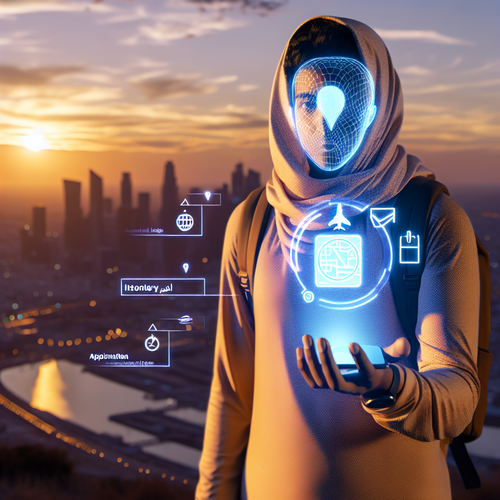🤖 AI Agents for Trip Planning: What They Actually Do
AI trip-planning agents function as intelligent assistants that significantly simplify travel preparations. They automate the generation of itineraries tailored to individual preferences such as budget, interests, and time constraints. These agents provide personalized recommendations for flights, accommodations, dining, and activities, all through engaging conversational chat interfaces, form-based questionnaires, or embedded widgets on travel websites. Beyond planning, AI trip planners handle bookings by directly interfacing with service providers and offer real-time travel support — for instance, rebooking flights after delays or suggesting nearby alternatives. For tourism operators, these agents enhance customer engagement by automating routine queries, streamlining scheduling, and creating opportunities for upselling premium services. The key benefits for travelers include saving time and reducing decision fatigue, while businesses enjoy improved operational efficiency and increased conversion rates.
⚙️ How the Technology Works Under the Hood: Models, Data, and Integrations
The sophisticated technology behind AI travel agents combines advanced language models, recommendation engines, and integrations with multiple data sources. Natural Language Processing (NLP) models interpret user inputs—whether typed or spoken—and generate responses that are context-aware and relevant. These models utilize extensive travel knowledge bases containing destination facts, weather information, transportation schedules, and user-generated reviews. Real-time connectivity is achieved through APIs linking airlines, hotels, mapping services, and payment gateways, enabling access to live availability, pricing, and secure booking functions. An orchestration layer coordinates these diverse systems, ensuring a seamless and intuitive user interaction flow. This modular architecture supports regular updates and the addition of new data sources or service providers, delivering timely, personalized, and accurate travel recommendations combined with transactional capabilities that users experience without needing to understand the complex backend processes.
✈️ Practical Benefits and Use Cases for Travelers and Tourism Businesses
AI-powered travel agents bring tangible advantages, including time savings, improved personalization of itineraries, and enhanced operational efficiency. Travelers benefit from itineraries that dynamically adjust to their unique preferences and accessibility needs, even accommodating last-minute changes to reduce stress and increase satisfaction. Tourism businesses—such as tour operators, hotels, and Destination Marketing Organizations (DMOs)—leverage AI technologies to automate upselling premium excursions, provide 24/7 virtual concierge services, and optimize resource allocation with demand forecasting. For example, AI itinerary builders suggest local experiences perfectly matched to traveler interests, while accessibility-conscious tools ensure mobility and dietary restrictions are respected. AI chatbots handle customer queries instantly, improving conversion rates and building guest loyalty. Such applications foster inclusive, engaging, and efficient travel services that keep pace with evolving traveler expectations in a competitive marketplace.
⚠️ Limitations, Risks, and Best Practices for Responsible Use
Despite their many strengths, AI travel agents come with limitations and risks that users and providers must consider carefully. Some common issues include model biases that could skew recommendations, inaccuracies stemming from outdated or incomplete datasets, and privacy concerns related to the handling of personal user information. Additionally, overreliance on automation may cause operational lapses if human oversight is insufficient to manage exceptions or detect errors. To responsibly harness AI’s benefits, best practices call for rigorous data verification, the inclusion of human-in-the-loop checkpoints for critical decisions, and clear communication with users about the capabilities and limitations of AI tools. Adhering strictly to data governance policies protects user privacy and ensures regulatory compliance. Continuous monitoring and updates are essential to correct biases, enhance reliability, and maintain user trust throughout the travel planning lifecycle.
🚀 How to Get Started: Simple Steps and Recommended Tools
Travelers and tourism professionals interested in adopting AI trip-planning technologies should begin with three essential steps. First, define pilot objectives such as improving customer engagement or automating parts of the booking process. Next, evaluate AI solutions based on integration ease, customization capacity, commitment to data privacy, and cost considerations. Finally, start with small-scale testing of select platforms to assess impact and gather user feedback. Recommended tools in the market include reputable APIs like Amadeus and Sabre that provide flight and hotel data; SaaS platforms such as Mezi or Lola.com that offer user-friendly AI interfaces and orchestration capabilities; and analytics tools designed to measure performance. After successful pilots, stakeholders should focus on scaling efforts by refining workflows, incorporating human oversight mechanisms, and ensuring robust data governance practices. This approach facilitates the development of a sustainable, AI-enhanced travel planning ecosystem that benefits all participants.

